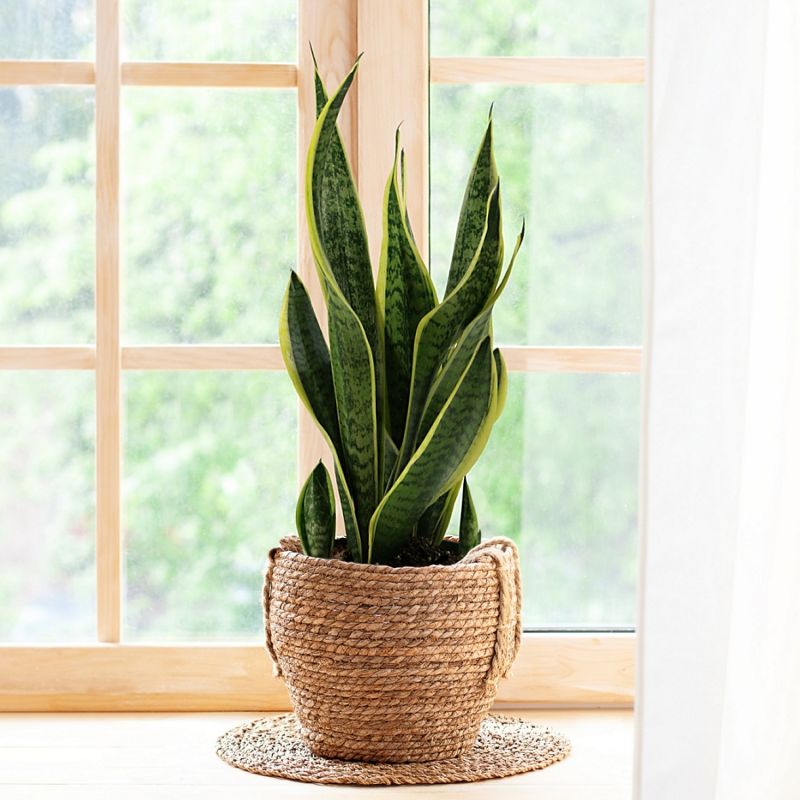
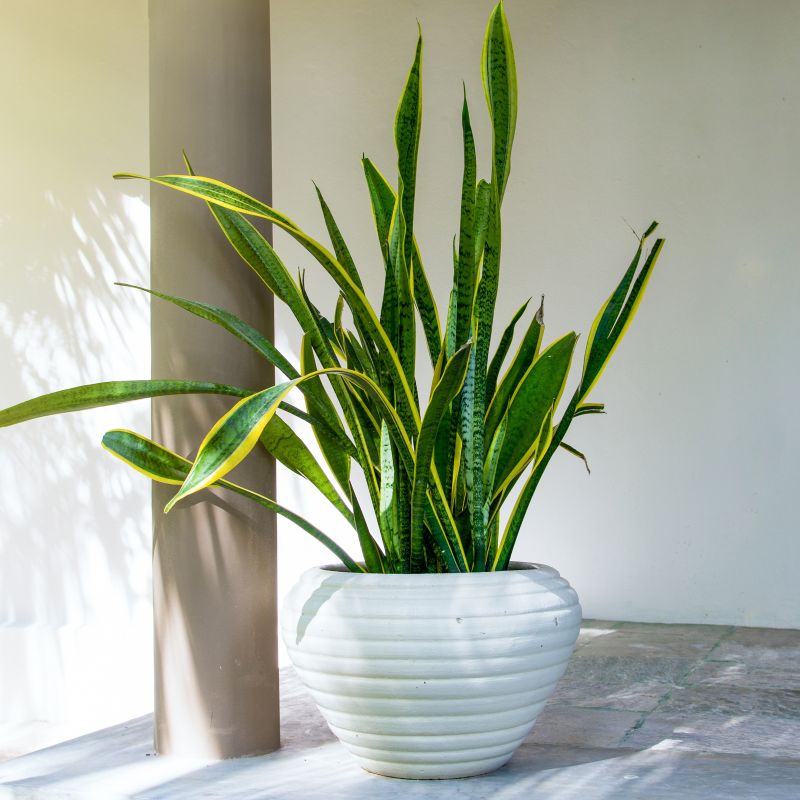
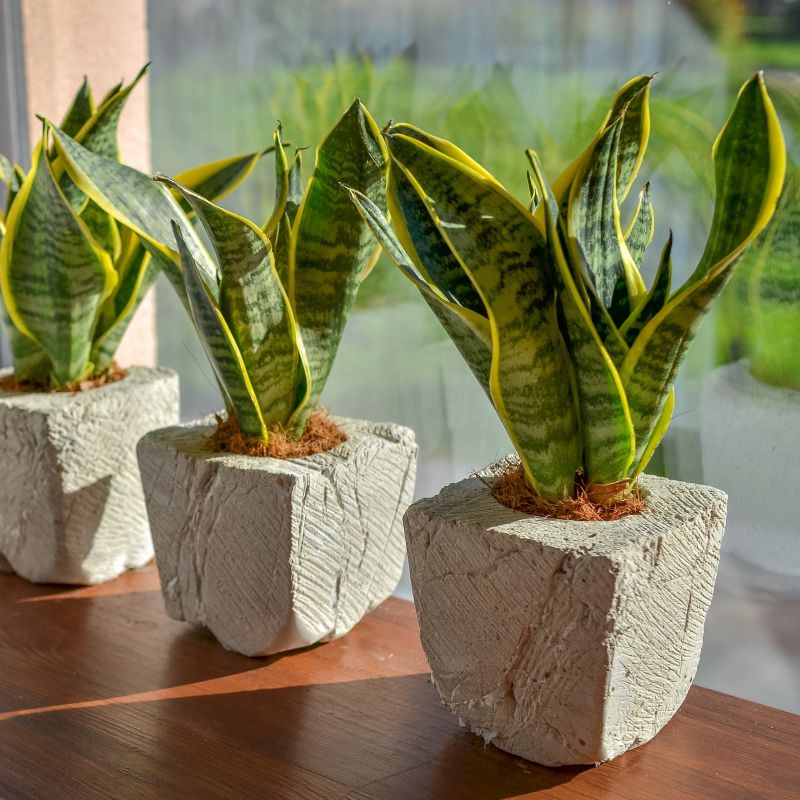
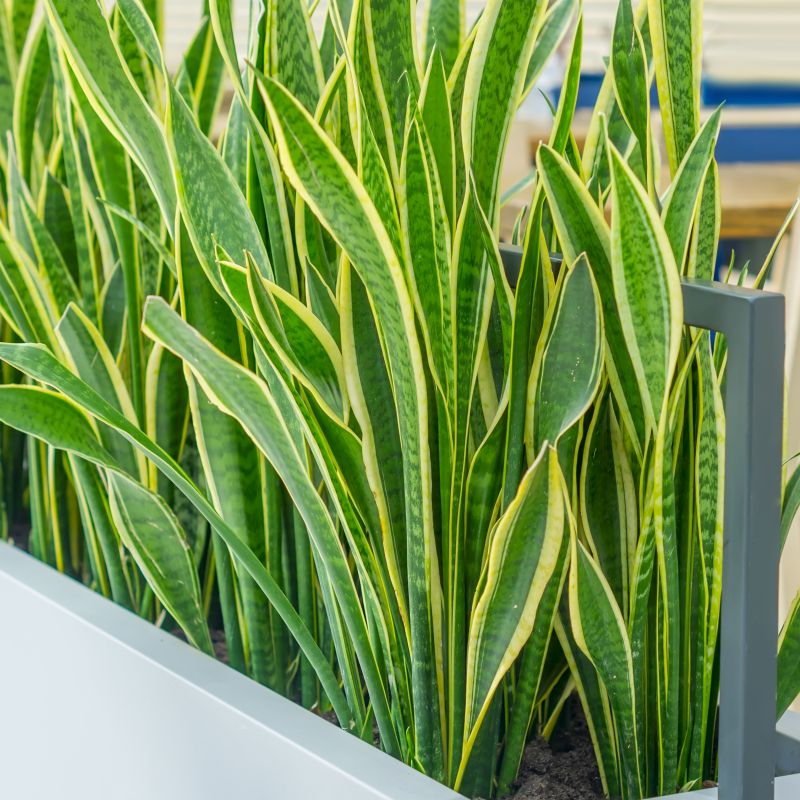
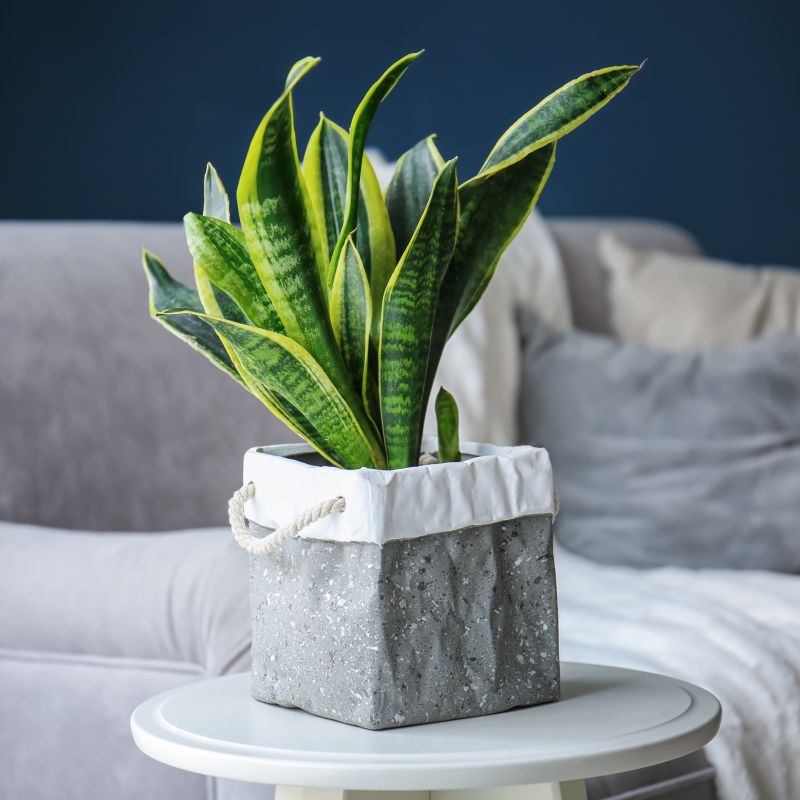
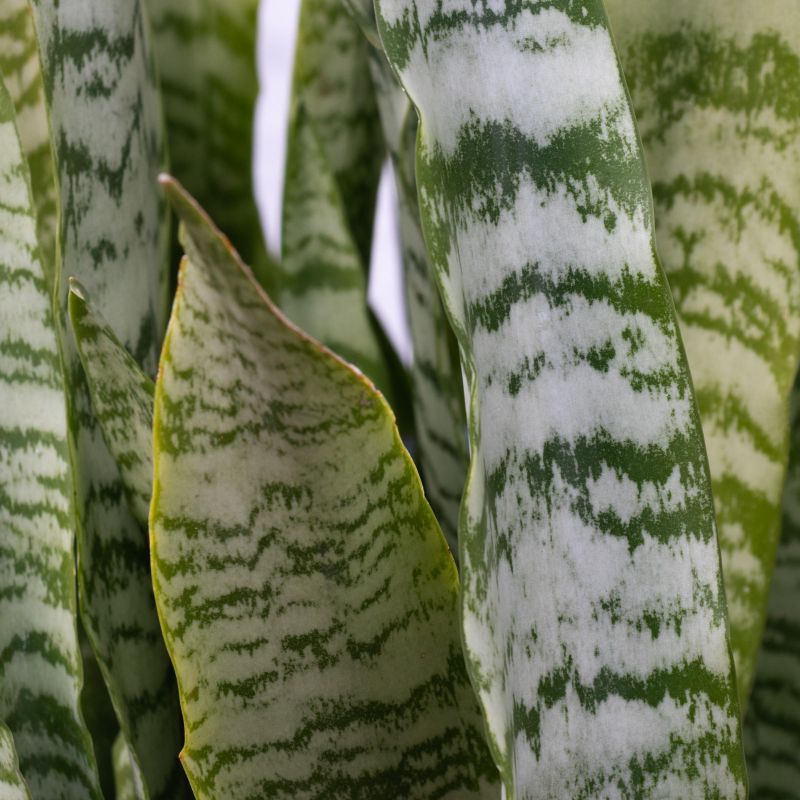
Snake Plant Laurentii
Sansevieria trifasciata Laurentii
91 reviews
Snake Plant Laurentii
Sansevieria trifasciata Laurentii
91 reviews
- Easy to care for and low maintenance
- Purifies indoor air by removing toxins
- Tolerant of low light conditions
- Recommended by landscape designers for optimal fit in real yards
$105.00
$150.00
30% Off
- Ships to in 3-5 Days
- Free Shipping Over $150
- Plant Arrival Guarantee
- In Stock
- Free Plant Consult
$200 - Landscape-Approved: Every Plant We Sell Comes With Design Expertise Behind It
4" Pot, 3 Pack
We are sorry, product is currently out of stock due to seasonal availability. Please check the "Related plants available in your area" section below
Not just beautiful - intentionally selected by ShrubHub's 3D landscape design team to fit real-world spaces and maximize yard potential.
Why Snake Plant Laurentii?
Snake Plant Laurentii, also known as Sansevieria trifasciata Laurentii, is a popular indoor plant known for its striking, variegated leaves. This plant is low-maintenance and can thrive in a variety of light conditions, making it perfect for beginners or those with a busy schedule. Snake Plant Laurentii is also known for its air-purifying qualities, making it a great addition to any home or office space.
Sunlight
Snake Plant Laurentii requires bright indirect light for best growth, but it can tolerate low light conditions as well. It is best to place the plant near a window where it can receive some sunlight, but avoid direct sunlight as it can cause the leaves to
Watering
Snake Plant Laurentii requires well-draining soil and should be watered sparingly, allowing the soil to dry out completely between waterings. Watering every 2-6 weeks is typically sufficient, depending on environmental conditions. Overwatering can lead to
Fertilizing
Snake Plant Laurentii requires a balanced liquid fertilizer, lightly applied every 4-6 weeks during the growing season (spring and summer). Diluted organic fertilizers or a general houseplant fertilizer can also be suitable. Avoid over-fertilizing, as Snak
Snake Plant Laurentii (Sansevieria trifasciata Laurentii)
The Snake Plant Laurentii, also known as Sansevieria trifasciata Laurentii, is a striking houseplant known for its upright, sword-shaped leaves with vibrant yellow margins. This variety of snake plant is characterized by its long, sturdy leaves that can grow up to 2-4 feet tall, making it a perfect statement piece in any room.
Snake plants are low-maintenance and easy to care for, making them perfect for beginners or busy plant parents. They are tolerant of low light conditions and can survive with minimal watering, making them a great choice for those looking to add a touch of greenery to their home or office without much effort.
In addition to their striking appearance, snake plants are also known for their air-purifying qualities. They are able to remove toxins such as formaldehyde, xylene, and toluene from the air, making them a beneficial addition to any indoor space.
Whether you're looking to brighten up a corner of your home or office, or simply want to enjoy the benefits of a low-maintenance air purifier, the Snake Plant Laurentii is an excellent choice that is sure to thrive in a variety of environments.
Plant Information:
| Botanical Name: | Sansevieria trifasciata Laurentii |
| USDA Zones: | 9 - 11 |
| Mature Height: | 2-3 ft |



Pollination Info
Pollination Info for Snake Plant Laurentii (Sansevieria trifasciata Laurentii)
The snake plant Laurentii is a popular houseplant known for its striking yellow-edged leaves. While snake plants can produce flowers, they are often small and not very showy. The primary method of reproduction for snake plants is through rhizome division or leaf cuttings rather than pollination.
Pollination Process:
Snake plants are capable of producing small, greenish-white flowers on rare occasions. These flowers are tubular in shape and are often not very noticeable. The flowers are typically pollinated by insects, such as bees, that are attracted to the sweet scent they emit.
Pollination Importance:
While pollination is not essential for the reproduction of snake plants, it can result in the production of seeds. These seeds can be collected and planted to grow new snake plant varieties. However, snake plants more commonly propagate through division or leaf cuttings, as this is a more reliable method of reproduction.
Conclusion:
Overall, pollination plays a minor role in the reproduction of snake plants. While flowers may occasionally appear and attract pollinators, snake plants primarily reproduce through other methods such as rhizome division and leaf cuttings.
FAQ
Snake Plant Laurentii (Sansevieria trifasciata Laurentii) FAQ
1. How often should I water my Snake Plant Laurentii?
Snake Plant Laurentii generally prefer drier conditions, so water sparingly. Allow the soil to dry out between waterings, typically every 2-6 weeks depending on environmental conditions.
2. What type of light does Snake Plant Laurentii need?
Snake Plant Laurentii do well in indirect light to partial shade. They can tolerate lower light conditions, but thrive in bright, indirect sunlight.
3. How often should I fertilize my Snake Plant Laurentii?
During the growing season (spring and summer), fertilize your Snake Plant Laurentii with a balanced houseplant fertilizer every 4-6 weeks. Avoid fertilizing during the dormant winter months.
4. How do I propagate my Snake Plant Laurentii?
Snake Plant Laurentii can be propagated by division or leaf cuttings. To propagate by division, carefully separate the root ball into smaller sections and replant in fresh soil. For leaf cuttings, cut a healthy leaf into smaller sections and plant them in soil. Keep the soil moist until new growth appears.
5. My Snake Plant Laurentii's leaves are turning yellow, what should I do?
Yellowing leaves can be a sign of overwatering or root rot. Make sure you are allowing the soil to dry out between waterings and ensure good drainage. Trim off any yellowed leaves to improve the plant's overall health.
6. Can Snake Plant Laurentii be grown outdoors?
Snake Plant Laurentii can be grown outdoors in warm climates, but they are sensitive to cold temperatures and frost. Make sure to bring them indoors during the winter months if temperatures drop below 50°F (10°C).
7. Are Snake Plant Laurentii toxic to pets?
Snake Plant Laurentii are considered mildly toxic to pets if ingested. Keep them out of reach of curious pets to prevent any potential harm.
Planting & Care
Planting and Care for Snake Plant Laurentii (Sansevieria trifasciata Laurentii)
Planting: Snake Plant Laurentii can be grown in well-draining soil and prefers bright, indirect sunlight. It can also tolerate low light conditions. Plant the snake plant in a pot with drainage holes to prevent overwatering.
Watering: Snake plants are drought-tolerant and only need to be watered when the top inch of soil is dry. Overwatering can cause the roots to rot, so it's best to err on the side of underwatering with this plant.
Light: Snake plants prefer bright, indirect sunlight but can also thrive in low light conditions. Avoid placing them in direct sunlight as this can cause their leaves to burn.
Temperature: Snake plants prefer temperatures between 60-85°F (15-29°C). They can tolerate lower temperatures, but it's best to keep them away from drafts and cold windows during the winter.
Fertilizing: Snake plants do not require frequent fertilization. You can fertilize them with a balanced houseplant fertilizer diluted to half strength once a month during the growing season (spring and summer).
Pruning: Trim any yellow or damaged leaves to keep your snake plant looking its best. You can also divide the plant's rhizomes every few years to encourage new growth and keep it from becoming root-bound.
Pests: Snake plants are relatively pest-resistant, but they can sometimes be susceptible to mealybugs or spider mites. If you notice any pests, gently wipe the leaves with a damp cloth or treat the plant with a neem oil or insecticidal soap solution.
By following these tips for planting and caring for your Snake Plant Laurentii, you can enjoy this beautiful and low-maintenance plant in your home or garden.
Check Out These Verified Customer Reviews:
Customer Reviews
4.7 out of 5 based on 91 reviews
Thank you! Your review has been submitted.
Beautiful plant, thriving in my home
Impressed with the overall quality of the plant, slight delay in delivery but worth the wait.
Great quality plant, only downside was slightly delayed shipment. Overall happy with my purchase.
Item has been added to your cart.


